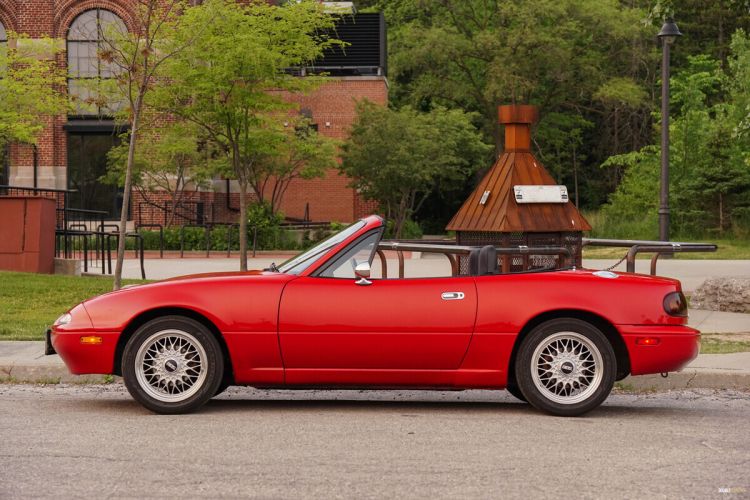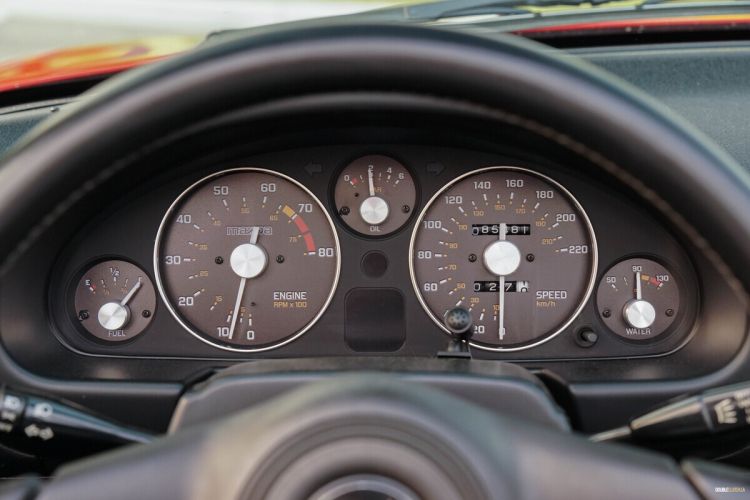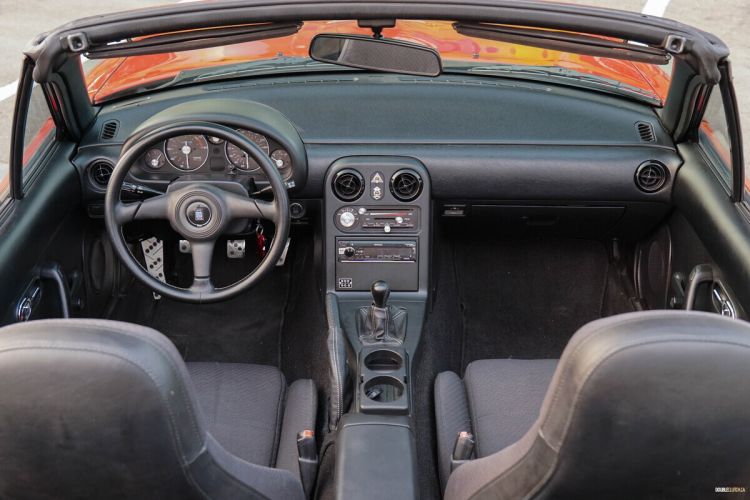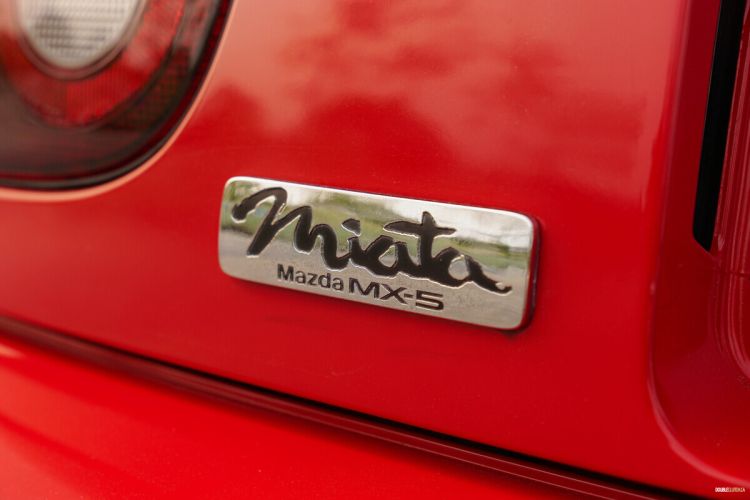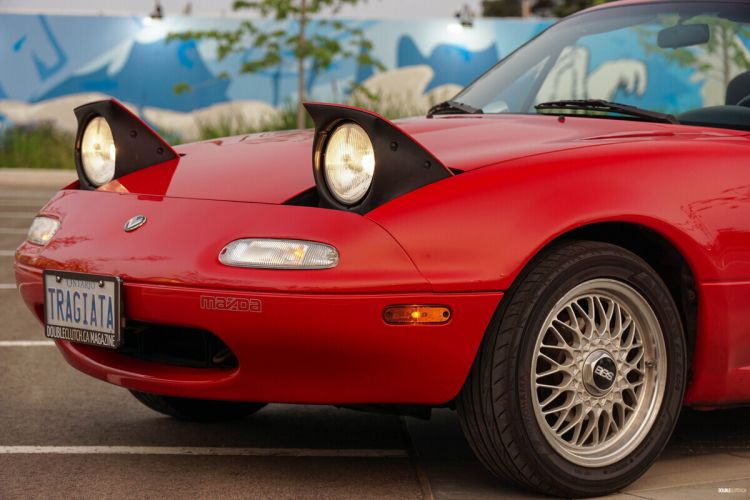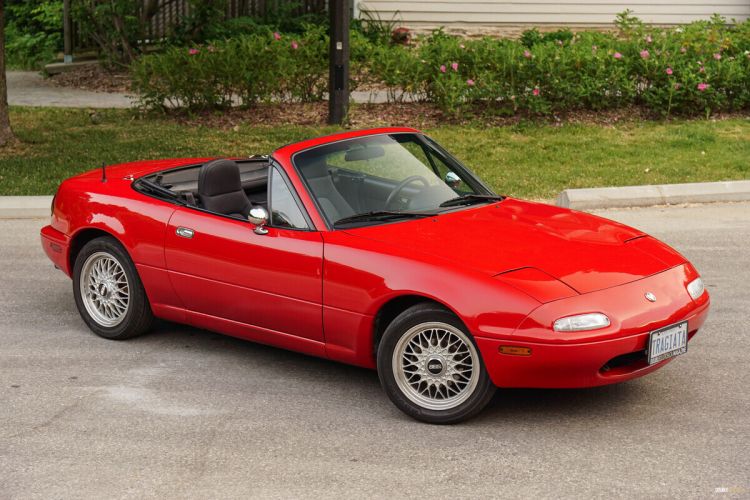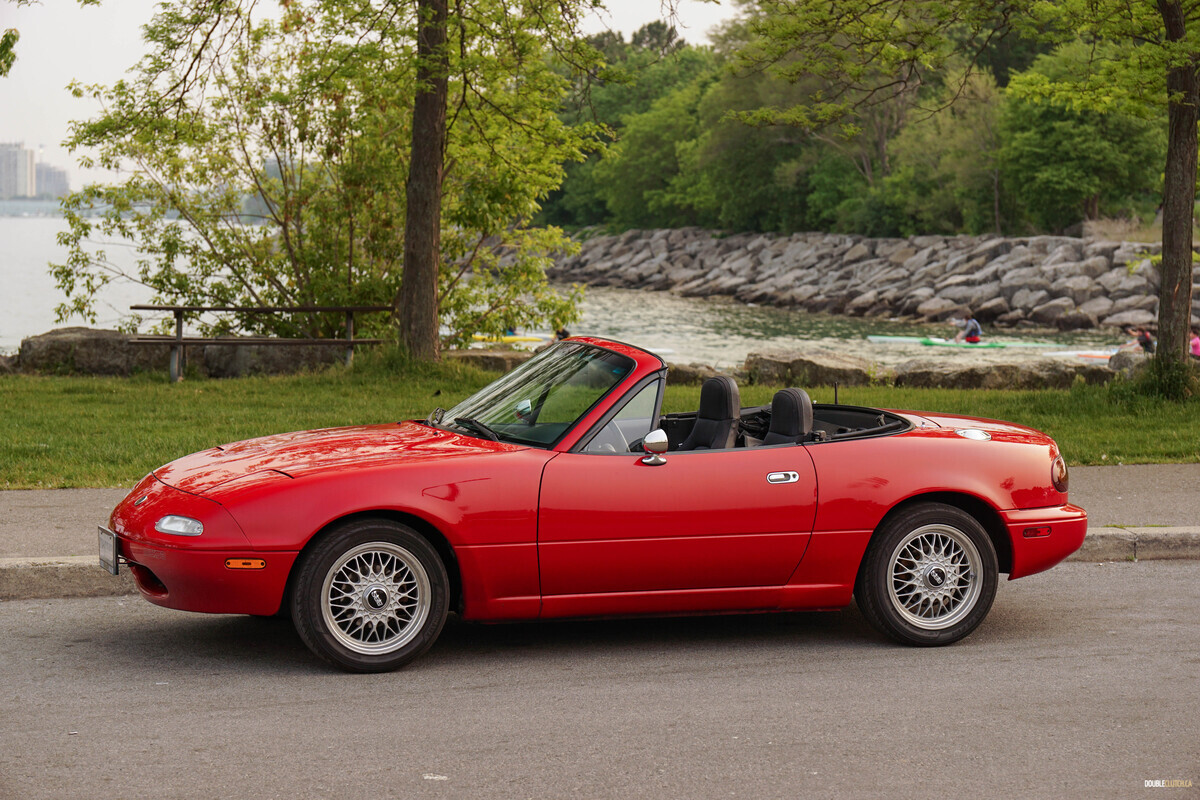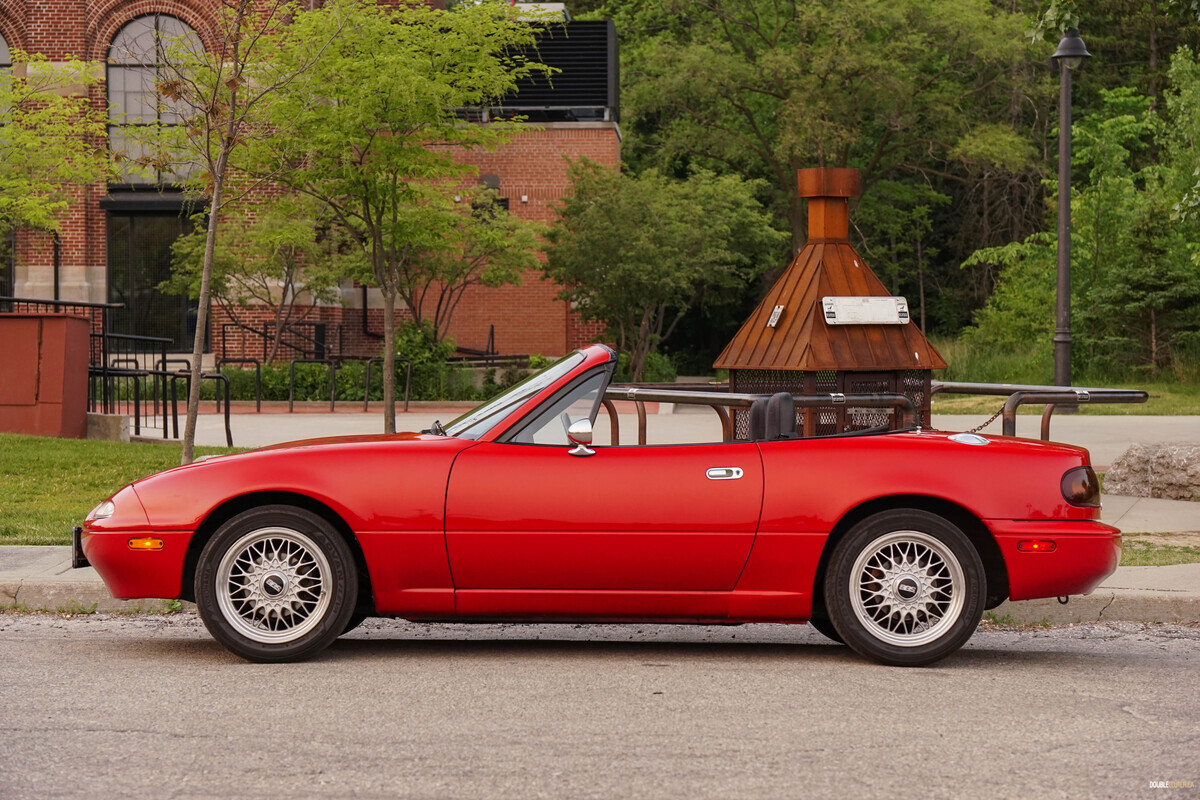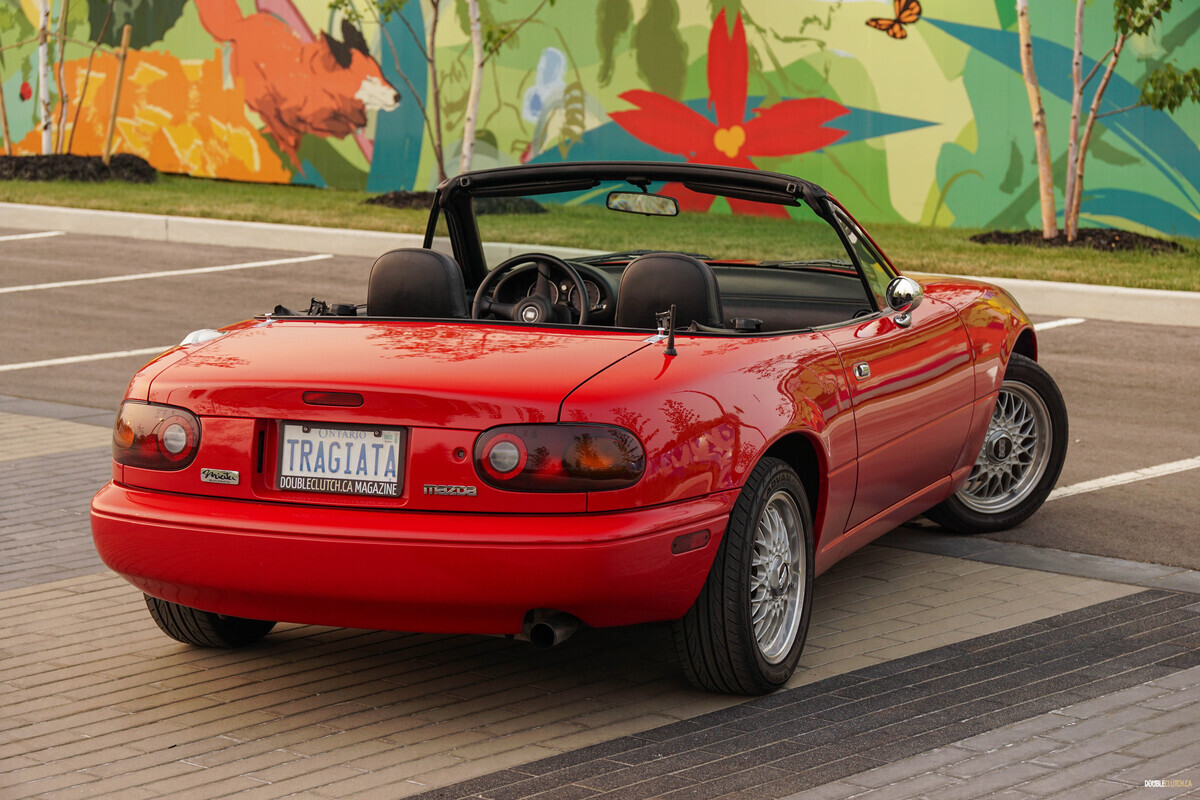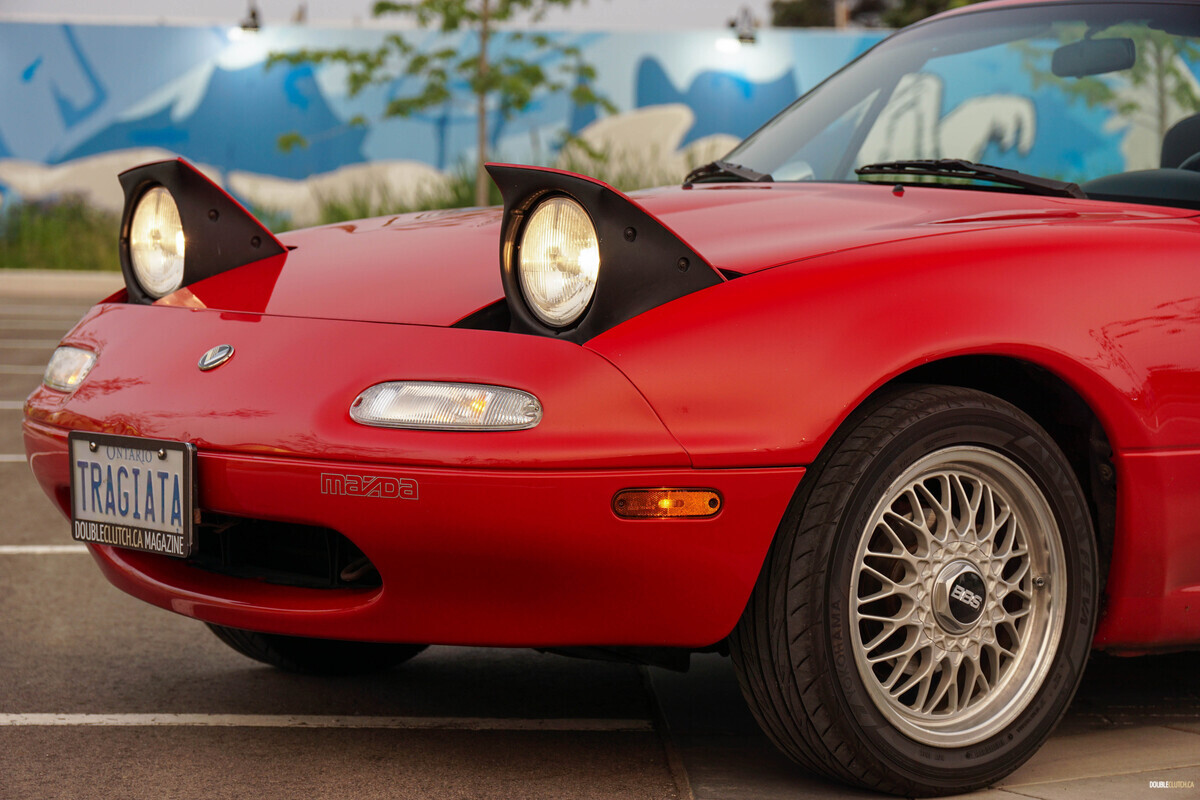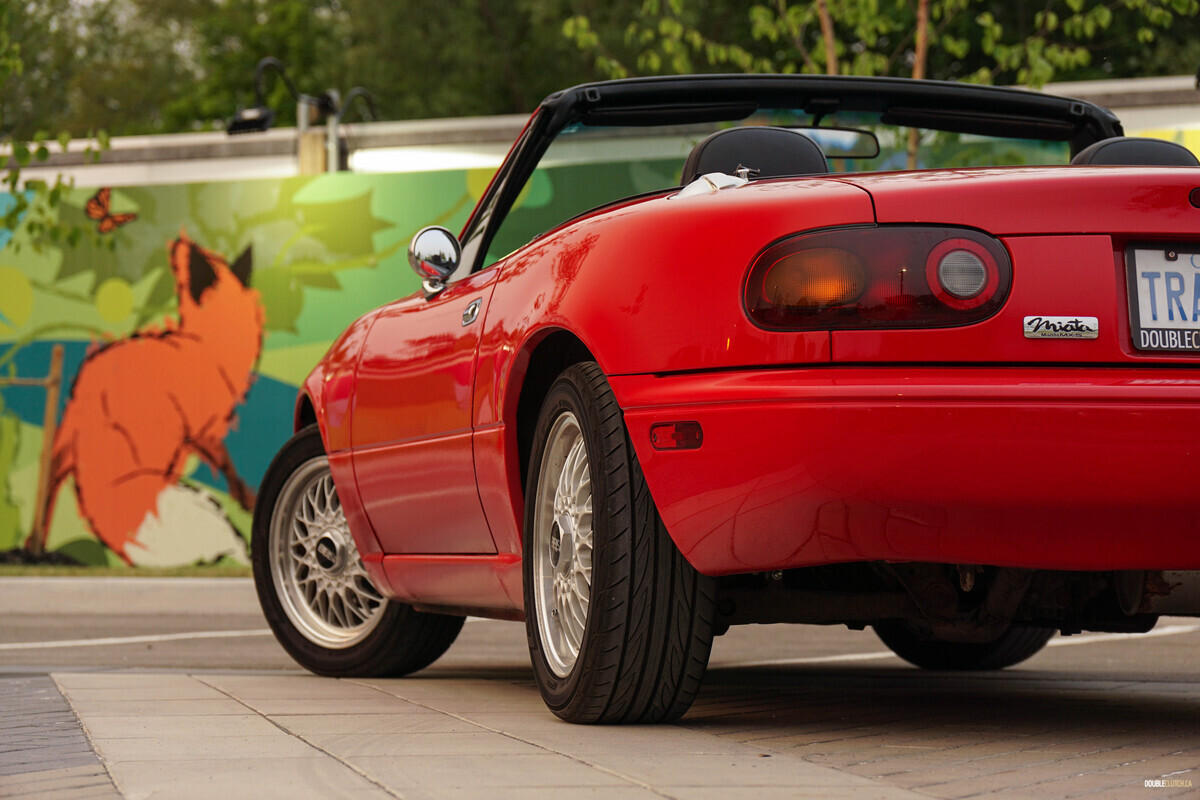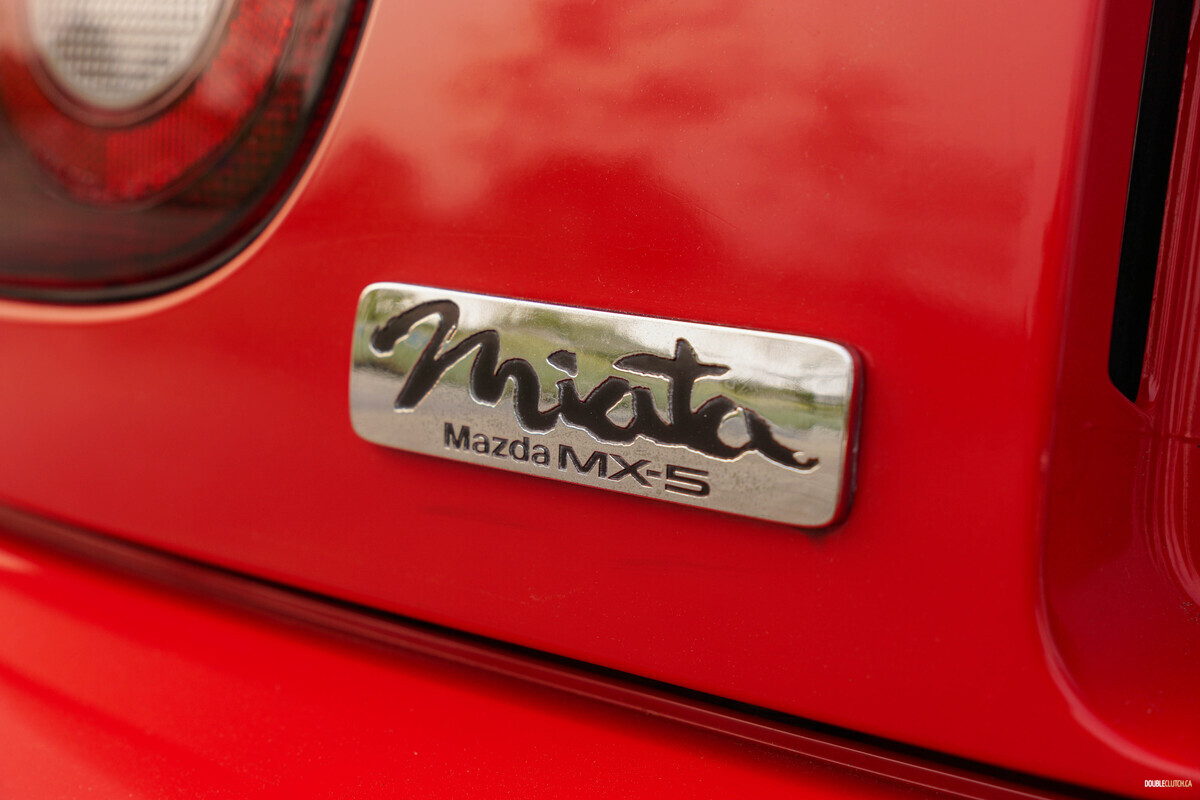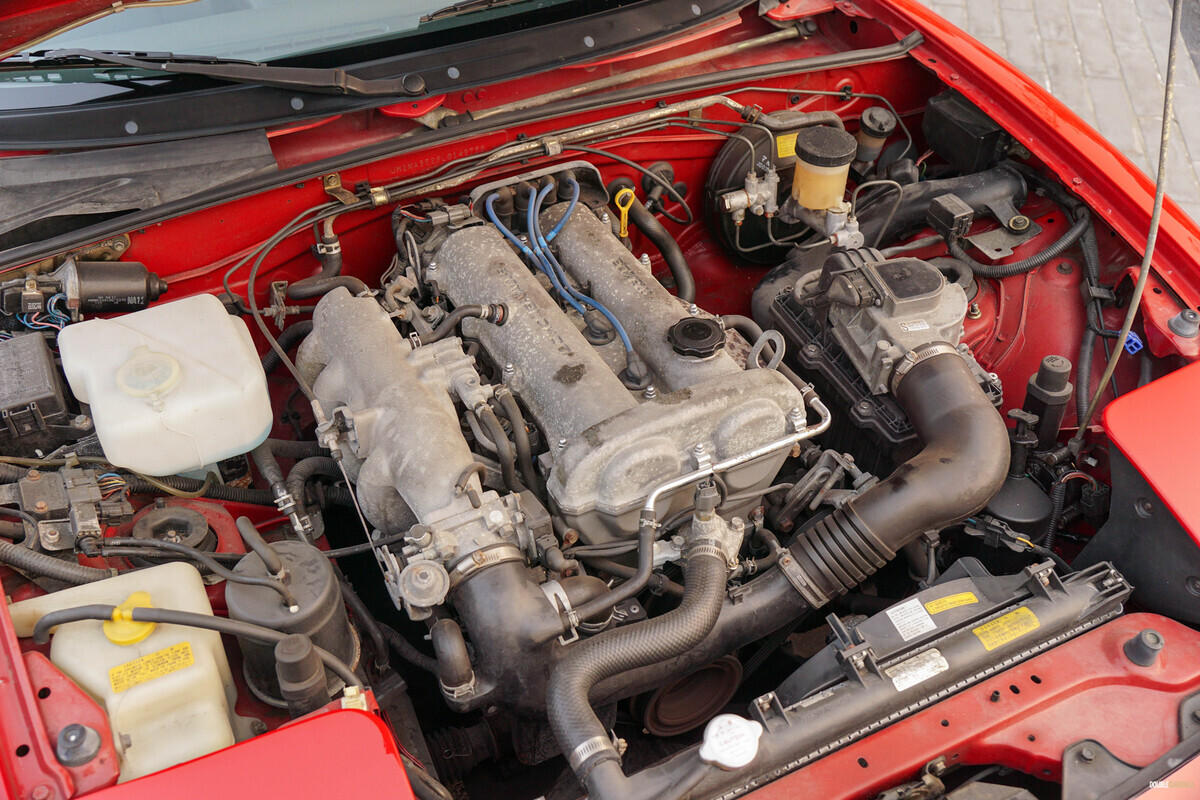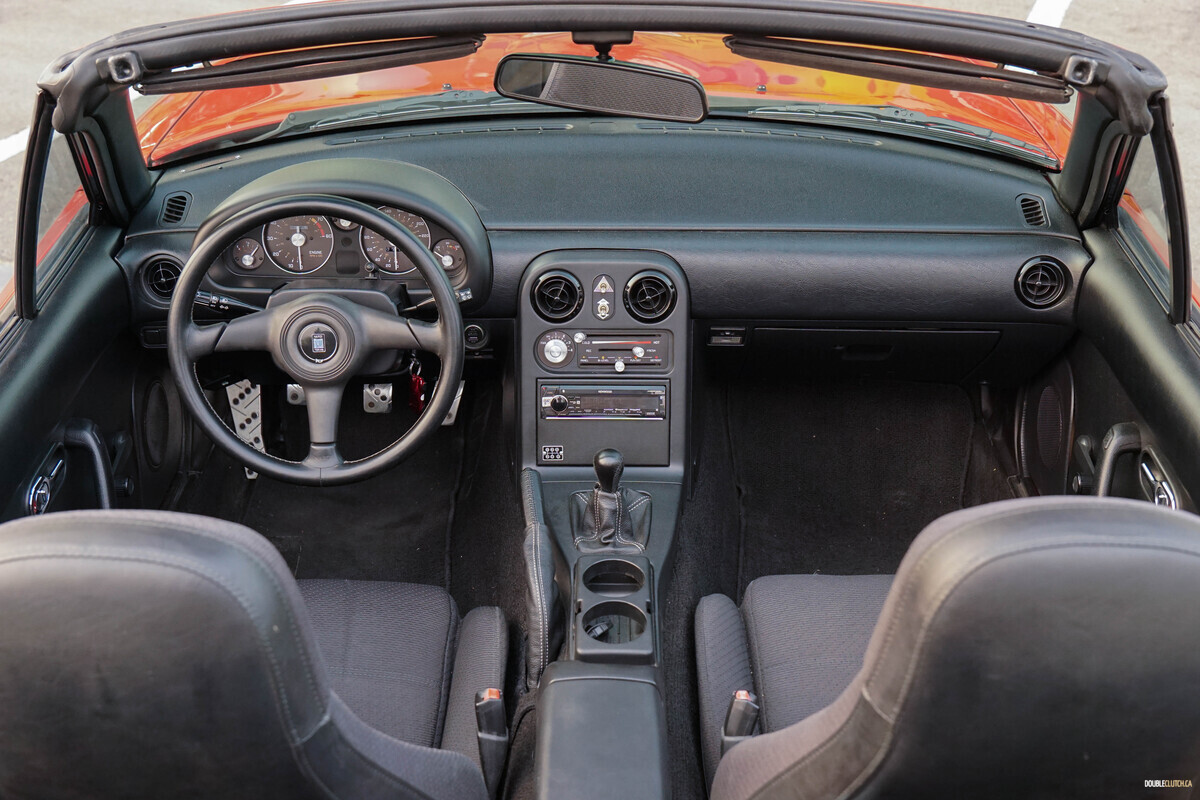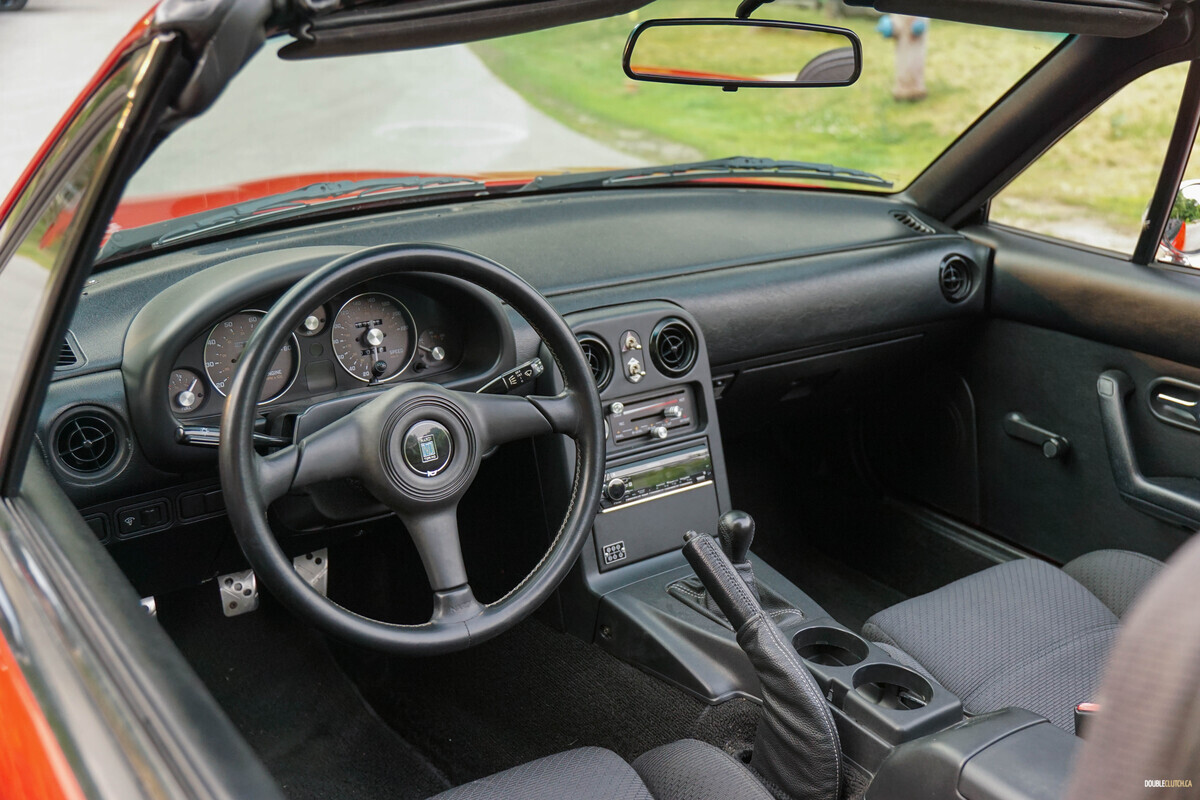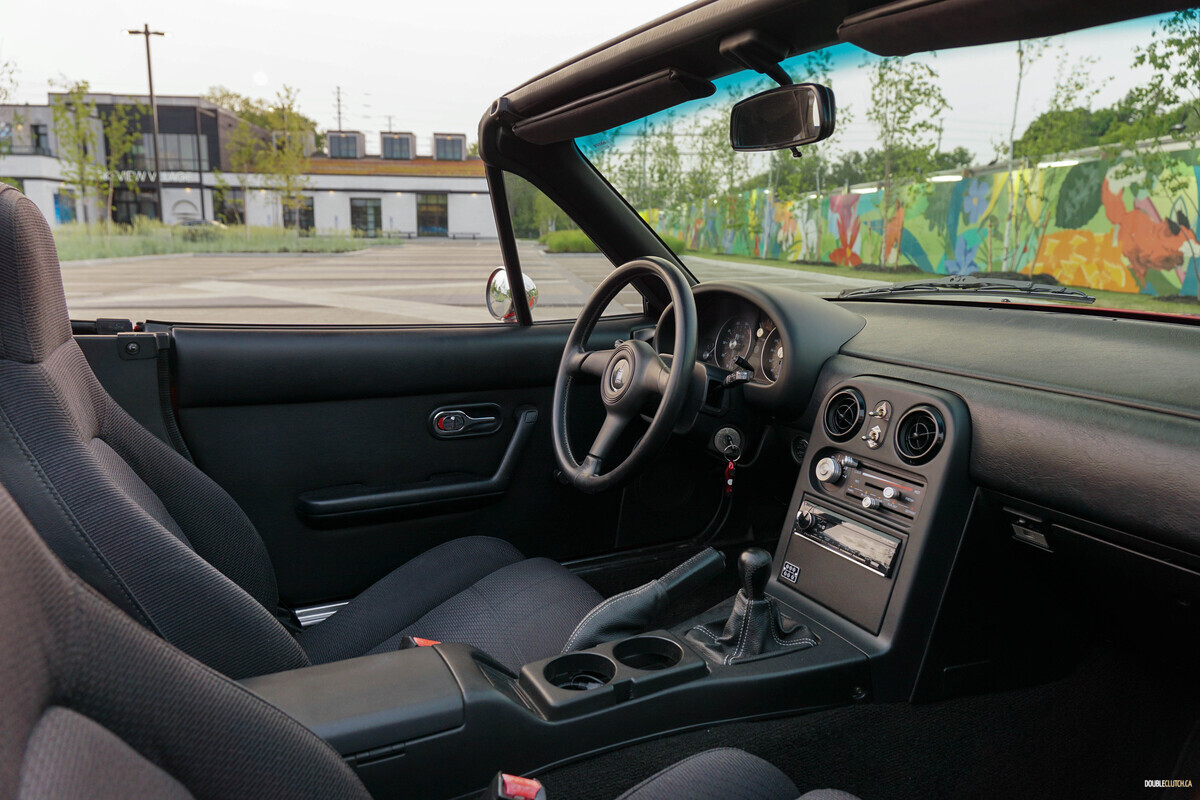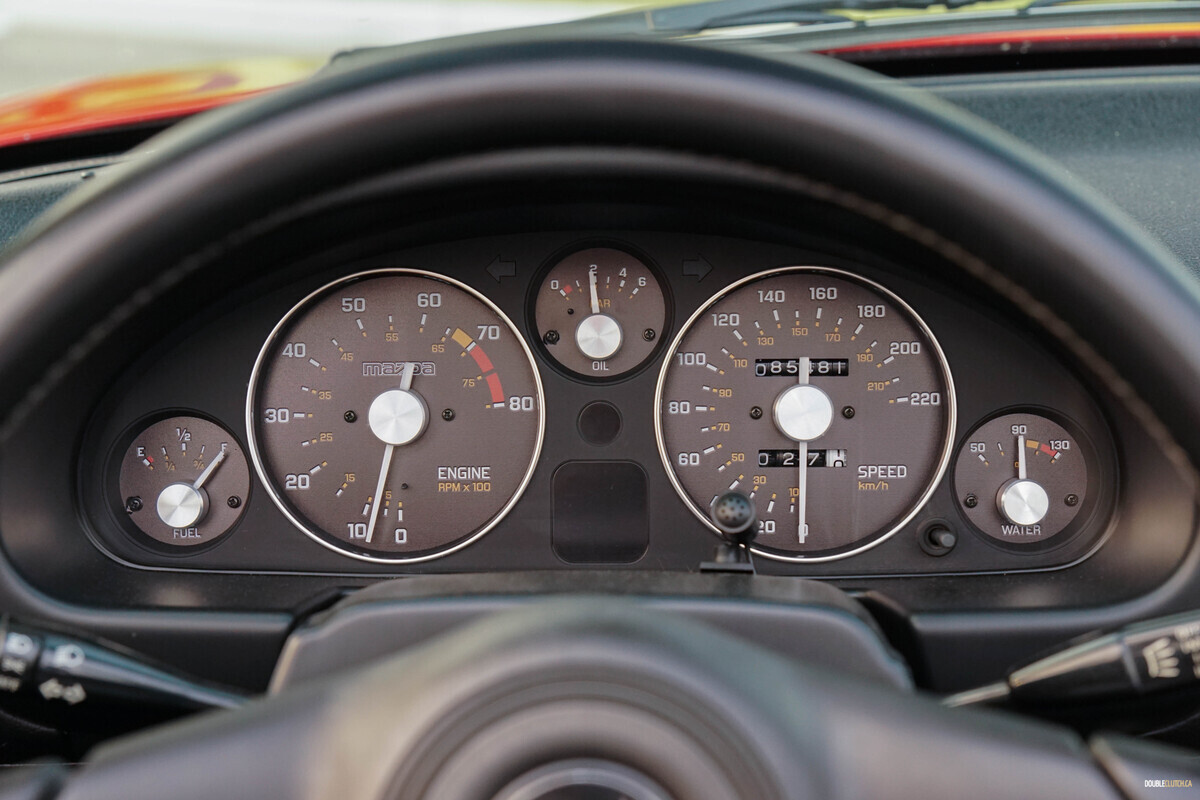I like Mazda Miatas. A lot. I always have. In my collection of Micro Machines as a kid, the little blue car, (which I would later learn was a Mariner Blue Miata) was my favorite. In Gran Turismo, I loved the little Miata for being so easy to pilot. One of the first few cars I ever drove was an immaculate example of a very early first-generation “NA” Miata, and it was about as close to a religious experience as I’ve ever had. I was recently granted the unique opportunity of going back in time, and sampling another pristine 1990 Mazda MX-5 Miata that belongs to our managing editor Nick Tragianis, now with the benefit/handicap of an additional decade and change of driving under me, to see if it’s still the holy grail I remember it as.
The original Miata was created as an homage to the classic British sports cars of the 60’s, specifically singling out the Lotus Elan as the primary source of its inspiration – it’s no accident that the very first special Edition Miata was British Racing Green. It was designed to deliver all of the vintage sports car charm, like the cute styling, and the wonderful handling and generally joyous driving experience, without any of the drawbacks, like finicky carburetors, temperamental electronics, and dubious build quality. It was an instant and massive success, and spawned a cult following.
I’ve driven every generation of Miata, (NA, NB, NC, ND, in that order) and recently had the immense privilege of sampling a brand new ND Miata in its spiritual homeland of Southern California. With this now-classic NA Miata, I was so eagerly awaiting the come-to-Jesus moment, revisiting the fabled original after so long, and after having experienced/driven so many other cars. The modern one was a gem, so surely the fine vintage must be significantly better, right?
I have since determined that, like so many things, there’s a little more nuance to it. I adored my time with the NA Miata and I firmly believe everyone needs to drive one once, but it wasn’t the second coming of Christ that I expected it to be. Yes, I am aware there is a possibility that that may be an unfair expectation to place on a tiny, old, budget convertible from a small, independently operated economy car business.
See, I have always thought old cars are inherently better than their modern counterparts. I prefer the simpler, more pragmatic engineering, I like the absence of safety equipment and digital nannies interfering with the driving experience, and I like the more raw and connected feel with the machine. With this in mind, I assumed the elder Miata would be better on the sheer merit of its age, and my own memories backed this up.
I expected it to be the best Miata, but the best Miata is the new one. I’ve now realized it does an incredible job (even better than I was already gushing over it for) of replicating the spirit and character and feel of the original, but without the drawbacks – just like the original did with the Lotus Elan. This isn’t a slight against the NA, which is still probably the one I’d most want to have in my driveway, but more a praise for how perfect the new one is.
The original Miata does have some advantages over its modern counterpart, the chief of which being the aesthetic. It’s such a gorgeous, simple shape, with classic lines and beautiful details. The cabin is a bastion of visual serenity, as it’s so gloriously basic, with absolutely nothing that doesn’t need to be there, and it’s not in your face about it, like so many newer cars feel the need to be (…except the Miata, curiously). There’s no pull straps in lieu of door handles, no carbon fiber trim, no bare floors for theater, it’s just featherweight-light simply because that’s what it is, no virtue signaling here.
Jump in; the door closes with a surprisingly solid metallic thud. Twist the key and the little 1.6 Liter twin-cam four banger comes to life with a very vintage sports car-esque burble. Unzip the rear window, pop open the locks on the frame of the soft top, and it neatly slides over your head and behind you in one motion – a wonderfully simple trick that Mazda has only gotten better at, and it’s bewildering that no one else has figured out how to do a convertible top this slick since then.
Now you’re open to the world, the elements, and the road, as the Gods intended. Press the light, short travel clutch, slide the famously slick shifter into gear, and set off. The Miata’s merit as a driver’s car becomes immediately apparent, if you weren’t already clued in. Mazda went to great lengths to make sure that the driver’s controls were impeccably intuitive, feeling organic and natural and eager, and it still holds up brilliantly. The throttle response is pin sharp, the brakes are reassuring, the clutch is easy to read, the shifter has been heralded over the years for its beautifully crisp action, and the steering is perfect.
This car radiates fun immediately – I was giggling to myself before I had even left the parking lot. Punch the the throttle and you’re met with a satisfying vintage sports car growl, with a nice exhaust tenor and a fun little intake snort. It’s perfectly usable around town in traffic at low rpms, but doesn’t really come alive until the upper reaches of the tach. People knock Miatas for being slow, but it’s definitely not too slow, and it’s endlessly fun to be able to bury the skinny pedal and wind it through the gears all the time without having to worry about keeping your license.
Of course, straight line speed is not what the Miata is about. First and foremost, the Miata is light and tiny, and it makes a brilliant case for why every car should be lighter. You can add wider tires, stiffer suspenders, tighter bushings, and new tricks like active all wheel drive and adaptive dampers all you want, none of it holds a candle to the agility and sheer joy that having a lightweight car can offer. Its balance is bang-on neutral, and has predictable transient behavior when you start pushing its limits. Every Miata is the most chuckable car on Earth, it’s one of the few cars that will make you annoyed that most of southern Ontario is a grid of straight roads.
One of the most impressive things about the OG Miata isn’t just its legendarily excellent driving dynamics, but its ability to marry those dynamics into a package that’s not only easy to drive fast, but easy to drive slow. When you’re not on it, it’s quiet, smooth, and incredibly efficient. The ride quality isn’t bad, the few creature comforts the car does have work well, and wind buffeting with the top down is remarkably mild – the newest Miata, with the advent of three additional decades of R&D, isn’t appreciably better on this front.
There’s no denying that being a thirty some-odd year old sports car, it has some drawbacks. First off, as mentioned before, they’re getting old, and finding one that hasn’t been eaten alive by rust is hard. From there, finding one that hasn’t been ravaged by suspect third and fourth owners is harder. Even with a really nice, well loved example like the one I drove, it’s still an old, fairly basic car, and basic was a lot more basic then than it is now.
Heated seats, heated steering wheel, power windows and locks, cruise control, tilt and telescopic steering, adjustable lumbar support, all that jazz… not here. Some say the Miata is better off without those things, and while that is part of its charm, the ND Miata incorporates all of those niceties without giving up an ounce of driving pleasure. The NA chassis is also a wet noodle and feels like it’s going to shake itself apart over anything but smooth pavement, and interior storage is non-existent.
These shortcomings don’t take away from it. It’s still a wonderful, magical little car that I firmly believe everyone should drive. The only thing that takes away from the 1991 Mazda MX-5 Miata is the newest, ND Miata – it’s genuinely astonishing how Mazda has managed to maintain the magic formula while making it a better, more capable car. The NA’s ace in the hole is the fact that it’s now a classic, with all the style, sensation and charm that comes with that, just like the roadsters that inspired it decades before.
See Also:
Enthusiast’s Corner: 2000 BMW Z3 M Roadster


